 |
| Sudley
House from the east |
| |
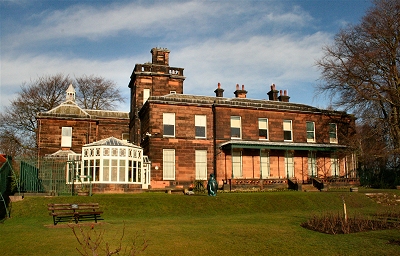 |
| Sudley
House from the south |
| |
 |
| The
drawing room |
| |
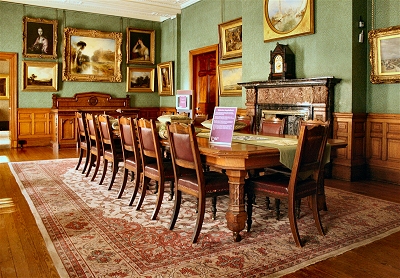 |
| The
dining room |
|
| The Robinson and Holt Families
and Sudley |
| The land upon which
Sudley (Mossley Hill Road) stands was part of the
possessions of the Tarleton family from the
middle of the 16th century to the early 1800s.
The land was split up and sold in 1809 and the 29
acres (12 ha) parcel that became the Sudley
estate was bought by the corn merchant Nicholas
Robinson (1769-1854) for £4500. The boundary
walls were apparently constructed in 1811 and the
family moved into the newly completed house in
1821. |
| Robinson's grandson,
writing of his grandfather, said that 'Sudley
House and buildings and all it contained were,
like him, all of the best, substantial, thorough,
no cheap thing for show, all made to last'.
He became Mayor of Liverpool in 1828-9. After his
death his unmarried daughters Cicely (d.1877) and
Ellen (d.1880) lived on in the house until
Ellen's death, when his son Charles took over for
a short time. However, he sold the house and
estate to George II Holt (1825-1896) in 1882 for
£22,000 to go and live at another family
property in Shropshire. |
| George II's father
George I (1790-1861) had moved to Liverpool as a
young man and made his fortune in cotton broking.
George II served his apprenticeship in Liverpool
with T. and J. Brocklebank and became a shipowner
and merchant, founding the Lamport and Holt
Line in 1845 with William James Lamport. He
married Elizabeth Bright (1833-1920) from another
shipping family and they had a single child Emma
Georgina (1862-1944). The family moved into the
house in 1884 from Sandfield Park, West Derby,
and he made a number of changes, including
relocation of the main entrance from the east
side to its present location on the north side,
construction of the garden verandah on the south
side and construction of the tower. He also
transformed the interior. |
| George II was a strong
supporter of Liverpool University College (later
Liverpool University), where he founded and
endowed the chairs of physiology and pathology.
He was also a noted art collector, a passion
acquired from his father, and filled the house
with works by Thomas Gainsborough, Joshua
Reynolds, Edwin Landseer, John Everett Millais,
J.M.W. Turner, George Romney, Henry Raeburn,
Camille Corot and many others. |
| Among George II's
younger brothers, Alfred Holt (1830-1911) was the
founder of the Blue Funnel Line and
Robert Durning Holt (1832-1908), a shipowner,
cotton broker and politician, was the first Lord
Mayor of Liverpool in 1883 following its grant of
city status in 1880. |
| After George II's death,
Elizabeth and Emma lived on in the house having
inherited an estate and fortune worth about
£600,000. Elizabeth died in 1920. Emma was a
bright and gifted child and studied the history
of archtecture at Liverpool University College.
Like her father, she was a noted philanthropist
(a friend of Eleanor Rathbone) and supporter of
Liverpool University, in particular the higher
education of women. She and her mother funded a
new physics laboratory, which was opened in 1904
and named the George Holt Laboratory in
honour of her father. Emma was elected to the
council of the University in 1909 and served
until 1934. A distant cousin and frequent visitor
during his childhood in the 1930s was the jazz
singer and art critic George Melly. He described
her as 'plain with a long face, an incipient
moustache, and very small eyes [...] shrewd and
self-aware. [...] Her character was original and
her generosity, especially to young people,
unstinting'. |
| Emma never married. She
remained in the house until 1940 when failing
health caused her to move to her country home Tent
Lodge in Coniston, Cumbria. She died there
in 1944 and was buried at Toxteth Unitarian
Chapel. On her death, she bequeathed the house
and estate, complete with all of the art works,
and £20,000 for their upkeep to the City of
Liverpool. During World War II, the house was
used as officers' quarters for the Women's Royal
Naval Service. After the war it was a public
library for a time. It is now run by National
Museums Liverpool. |
|
 |
| Haymaking
at Sudley c. 1890 |
| |
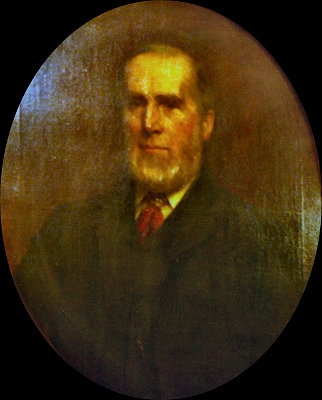 |
| George
Holt by Robert E. Morrison (1892) |
| |
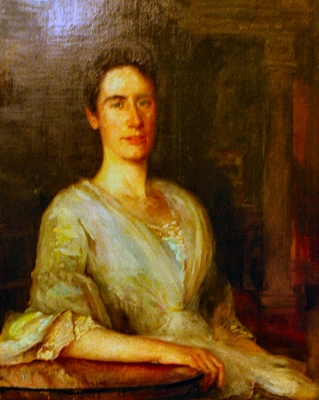 |
| Emma
Holt by Percy Bigland (1889) |
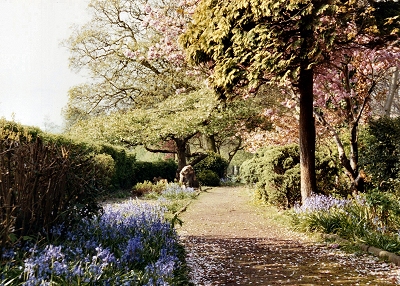 |
| The
back garden at Sudley |
|